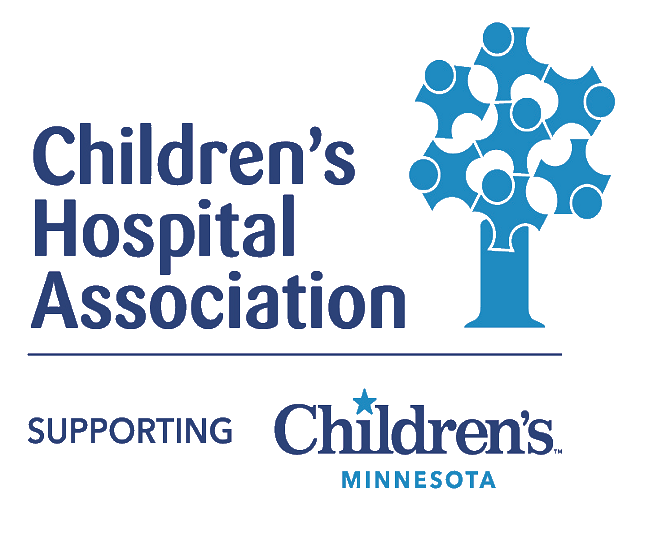
CHA-Funded Programs & Services
About CHA Grantmaking
Each year, Children’s Hospital Association puts out a request for proposals to the leadership of all programs and services at Children’s Minnesota. Based on the applications received for funding, CHA’s Board of Directors votes to pledge funds to programs that integrate, innovate, involve, and impact pediatric health care. Over the organization’s history, more than $27 million has been donated to unique programs and services at Children’s Minnesota, impacting over 1 million kids and
families in our local community.
CHA is an independent 501(c)3, working separately, but closely aligned with the Children's Minnesota Foundation to meet the needs of wrap-around services at the hospital, ensuring that these costs never show up on a patient's bill.
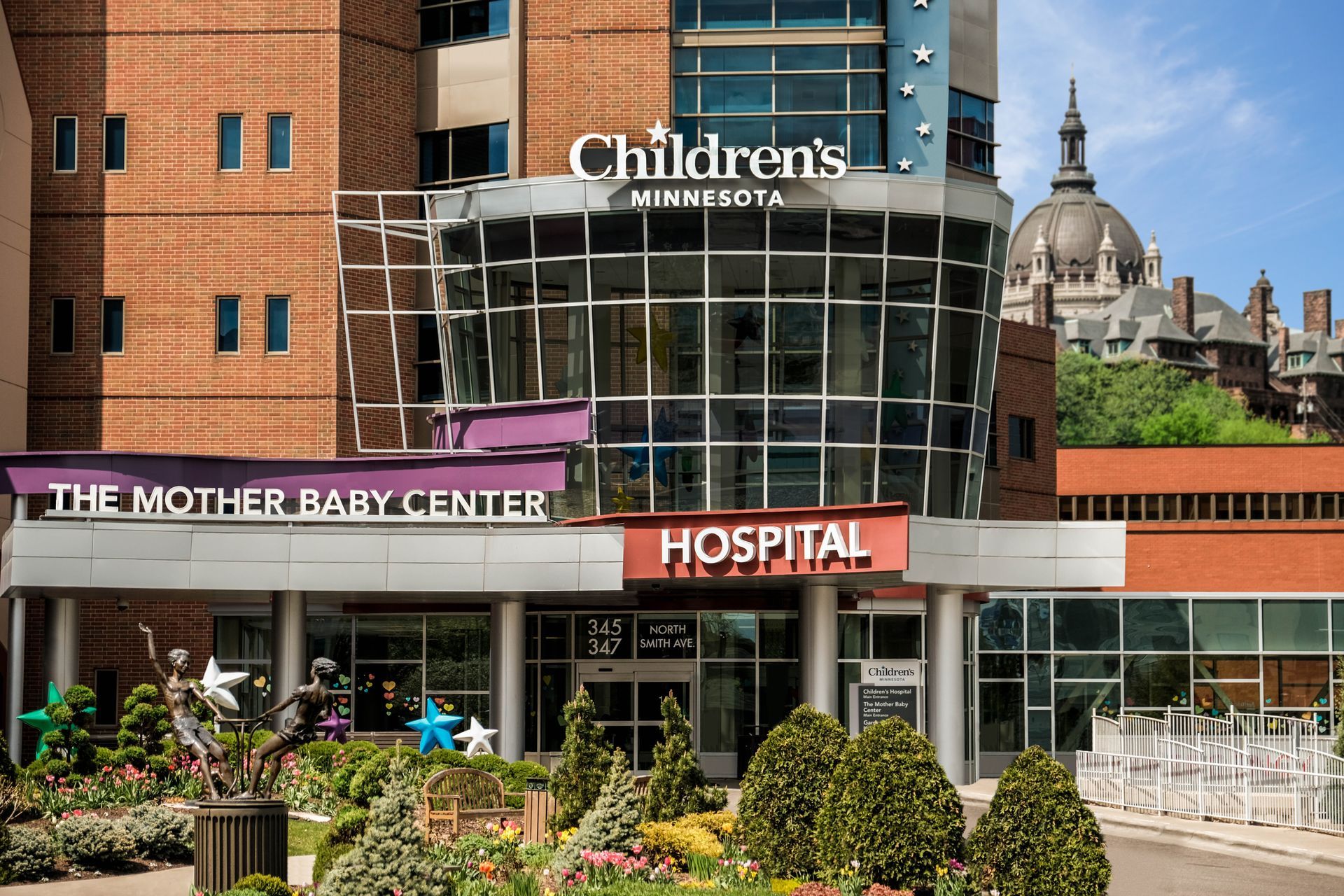
2024 CHA-Funded Programs & Services at Children's Minnesota

Audiology Program ($13,00)
-
Learn More About This Program
About:
Because of CHA’s previous grants, Audiology has expanded options in the Twin Cities for families who need hearing aid loaners, especially for families who speak languages other than English or Spanish. With our pledge, the Audiology department will expand access to technology and tools for the Hearing Aid Loaner Bank and ensure patients with single-sided deafness can determine the best options for technological intervention.
Impact Story:
We had an older child who needed revision surgery for a device. Being able to give the family and especially the child an illustrated book outlining the surgery and follow up was very helpful to the family.
Another family that we were able to impact was a family who lives in a rural area and does not have access to the Internet. The family was looking for a specific book about ASL and learning the Exact Signed English for their child and family. They were not able to obtain it through their local library. Through the grant, we were able to provide a copy of this book to the family.

CVICU Critical Care ($17,000)
-
Learn More About This Program
About:
The CVICU Critical Care Family/Caregiver Education Specialist aims to decrease the stress of navigating hospital stays and learning to care for a child with complexities through standardized, yet individualize, evidence-based caregiver education. This role works collaboratively with the bedside nurse, attending physician, and other disciplines to provide and coordinate the education needs of the families of the high-risk cardiovascular population at Children’s Minnesota. This includes information on medications, treatments, equipment operation, coping with chronic illness and other related topics.
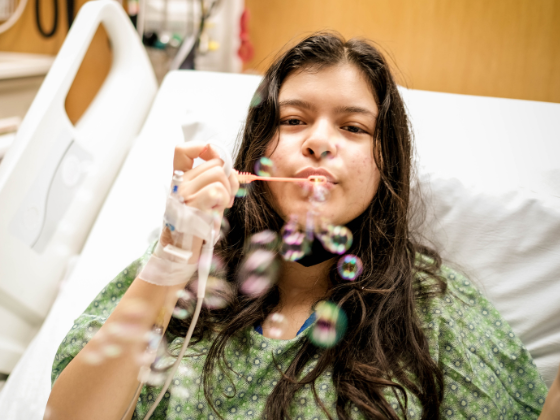
Child Life in the Emergency Department ($46,000)
-
Learn More About This Program
About:
A trip to the emergency room is scary for anyone, but for a child, those fears can be more profound and have a lasting impact. The Child Life Specialists in the emergency department are uniquely trained to talk to children in an age-appropriate language about what they’re experiencing. They engage the children and help reduce their anxiety, calming them while they receive their medical care. This compassion encircles the whole family by creating a safe, child-friendly, appropriate environment for the patient, their parents, and their siblings.
Impact Story:
A story from a Child Life Specialist in the St. Paul Emergency Department:
I had the pleasure of working with a sweet 14-year-old girl during my shift today. A nurse came up to me and said "I need you! I have a girl who needs an IV and labs and she is so scared she's already bawling in the room. I don't think anything is going to help but we'll try". (This patient was transferred to Children's from a residential facility for further testing).
I walked in and introduced myself to her and her parents. She was quiet and tearful but engaged in conversation with me. I kneeled next to her and let her know that it was okay to be nervous and asked if she had had an IV in the past. Tearfully, she shook her head "no" but mentioned that she has had her labs drawn in the past. I asked her how much she knew about what an IV is and she expressed that she didn't know what an IV was. Using developmentally appropriate language and real medical equipment, I explained to her what an IV was and let her know that the needle does not stay in her arm once the IV is in. After I told her this, she was surprised and said "It doesn't?!" I noticed a sense of relief come from her and had a feeling that was what she was most worried about.
I talked with her about different ways we could support her throughout her IV start and what would be helpful vs what would not be helpful. She let me know that she did not want to know what was going on and would like her ears and eyes to be covered. So, I provided her with a pair of noise cancelling headphones and a washcloth to place over her eyes. I also encouraged her to take deep breaths as she would not be able to hear me remind her with the headphones on. I also encouraged Mom and Dad to come to the head of the bed to comfort and support her.
Outside the room, I spoke with the nurse and filled him in on what the plan was. He was on board. We entered the room together and I got her situated with the headphones and washcloth while the nurse set up. The nurse nodded to me when it was time and I placed the wash cloth over her eyes. She was tearful but continued to take deep breaths throughout the procedure and tolerated the procedure beautifully. Once the procedure was over, I removed the washcloth and headphones and she could not believe it was over. She smiled and said "Wait, it's done? What about the blood? " I let her know that it was all done and the procedure was over. Mom and Dad looked at me and thanked me for supporting their daughter throughout the procedure. The patient became more talkative and was excited to engage in the normative activities I provided her while she waited in the Emergency Department. She and her parents were very appreciative of Child Life Services.
I felt very appreciated after working with this patient and her family and was reassured that I am doing what I am meant to do.
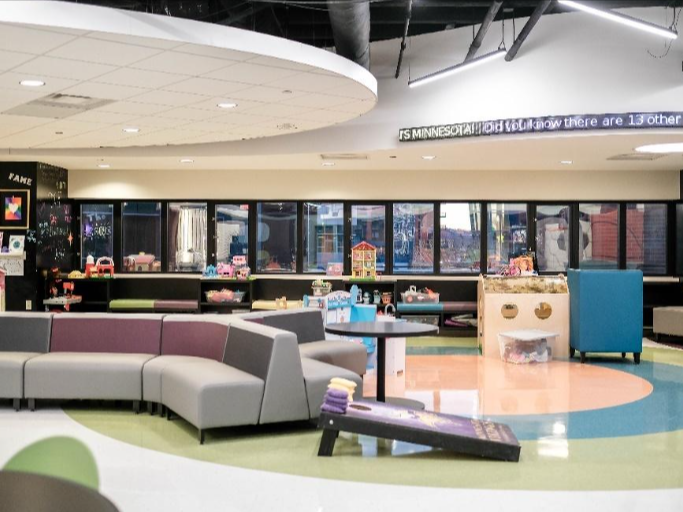
Child Life Zone ($15,000)
-
Learn More About This Program
About:
A child can experience many scary and unfamiliar things while seeking medical care. There is a lot of stress that can accompany these children in these environments. Minimizing this stress can help create a positive healing environment. The Zone is a therapeutic space offering a safe and healing space where children can have fun while experiencing healing therapies and medical care. Child Life Specialists provide these therapies through art, music therapy, a sibling play area, and therapy dogs, to name just a few of the amazing things these specialists provide. The Child Life Zone allows children seeking care, or accompanying family members seeking care, to have fun and enhance their health care experiences.
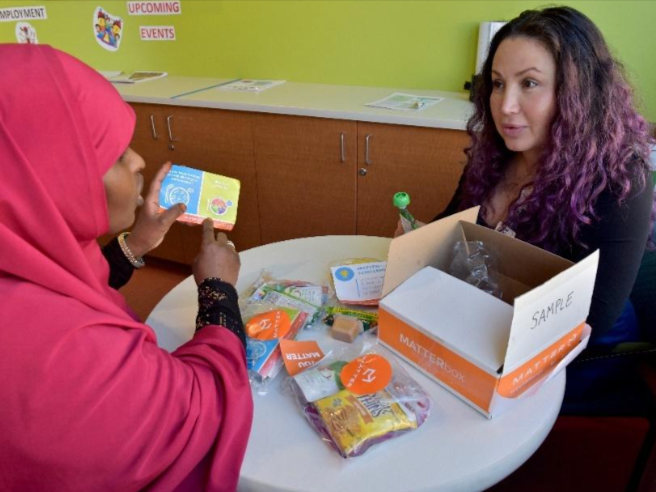
Children’s Minnesota Community Connect ($50,000)
-
Learn More About This Program
About:
What happens outside the healthcare setting – at a child’s home, in their school, and their community – has the greatest impact on a child’s health. Community Connect identifies social issues (such as food insecurity, unsafe housing, and lack of transportation), connects families to the social services they need, and coordinates supportive follow up to make sure the services are received. CHA is proud to be a foundational supporter of this program’s continuous drive to narrow the health disparities gap.
Impact Story:
A single mom of four children lost her home due to a kitchen fire. The Resource Navigator was able to point her to resources that would provide free and low-cost clothing and household items that she and the kids needed while temporarily living in a hotel. In a recent follow-up call, Mom shared her gratitude with the Navigator, expressing, “You followed through for weeks, making sure my family did not need anything else during the time that we were in the hotel. I really liked all the support and resources you provided, especially since I am undocumented. Now, all we are waiting
for is for the construction company to finish rebuilding our home.”
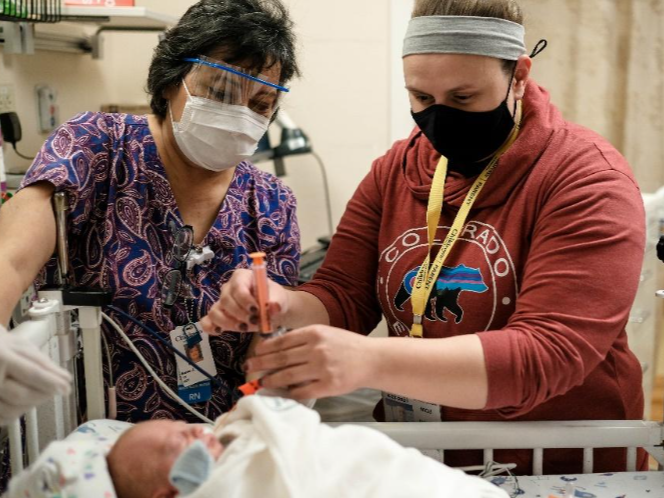
Caregiver Simulation Program ($21,000)
-
Learn More About This Program
About:
Imagine the fear and of managing your child’s feeding tube, giving multiple medications each day, or constantly watching for signs that your child is struggling to breathe and you need to get them emergency care. Families at Children's Minnesota are asked to provide many complex cares at home. To ease the burden and anxiety before discharge at home, this program will continue expanding its initiative education program for families to learn integrative care on mannequins. These include managing life-sustaining medications and monitoring daily blood oxygen levels and weight, in a simulated home-like environment.
Impact Story:
We had a recent family complete the caregiver simulation program to have hands-on practice with tracheostomy and ventilator management. The family recently reached back out to our program with a note of gratitude. The mother shared her child had experienced a scary event where she needed to perform CPR on her child and call 911. The mother stated that the simulation had prepared her for this event, allowed her to remain calm and get her child the help needed. Her child recovered following this event and is home with family. Due to CHA funds, we were able to prepare this family for the most emergent needs and help the child get to a hospital in a safe manner. This emergency, although frightening for the family, also prompted the mother to identify she is able to safely care for her child and has the skills to keep them safe even in the scariest circumstances.
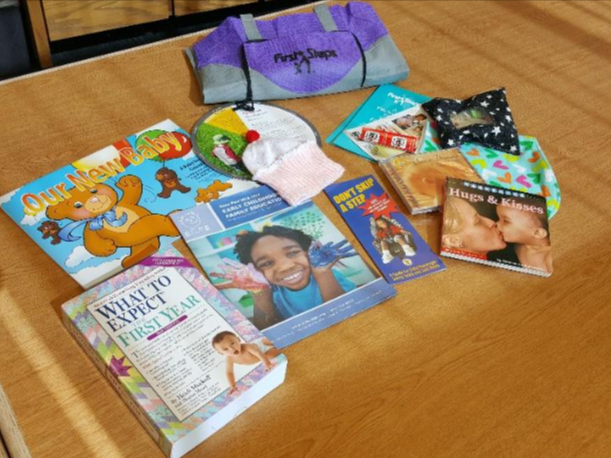
First Steps ($13,000)
-
Learn More About This Program
About:
Teen parents need special support. For more than fifteen years, First Steps has supported young parents tackle the new role of parenthood and build a healthy family environment. Counselors provide immediate support when the baby is born with a care coordinator visit that provides educational resources, baby clothes, and blankets. That support continues throughout the first year through calls, in-person visits, and social activities connecting teens facing the same financial, social and parenting challenges.
Impact Story:
Earlier this year, I received a call from the mother of one of my teen moms. She sounded a bit panicked and concerned for her daughter’s new baby. I had spoken to this family on several occasions since the baby’s birth and knew that they had made a conscious decision not to put the father on the baby’s birth certificate — nor did he want to have the responsibility of being a dad.
Yet, it was now a few weeks after the baby’s birth and, as often happens, Dad changed his mind. He had decided that he wanted to see the baby and have visitation. When the baby’s mom and grandmother told him he couldn’t take the 6-week-old baby to his home (two hours away) immediately, he became angry and frustrated … so the grandmother called me. We talked for
several minutes and, ultimately, I ended up talking (by phone) to the father of the baby — who was anxious, and angry and needed to work through some very big thoughts and emotions. Much of our conversation was spent validating his concern and calming his heightened stress level. We discussed that he also did not have any of the things a baby might need for basic care while away from his mom.
Ultimately, the situation de-escalated and the family is currently working on addressing parenting and visitation through proper legal channels. In this case, having immediate access to an impartial ‘third party’ made a difference and helped keep a child in a safer place. After the initial
discussion, First Steps was able to provide the parents with a variety of low-cost resources (legal, parenting and mental health) that have allowed them to help sort out things in a way that will keep
the best interests of the baby at the forefront of their decision-making.
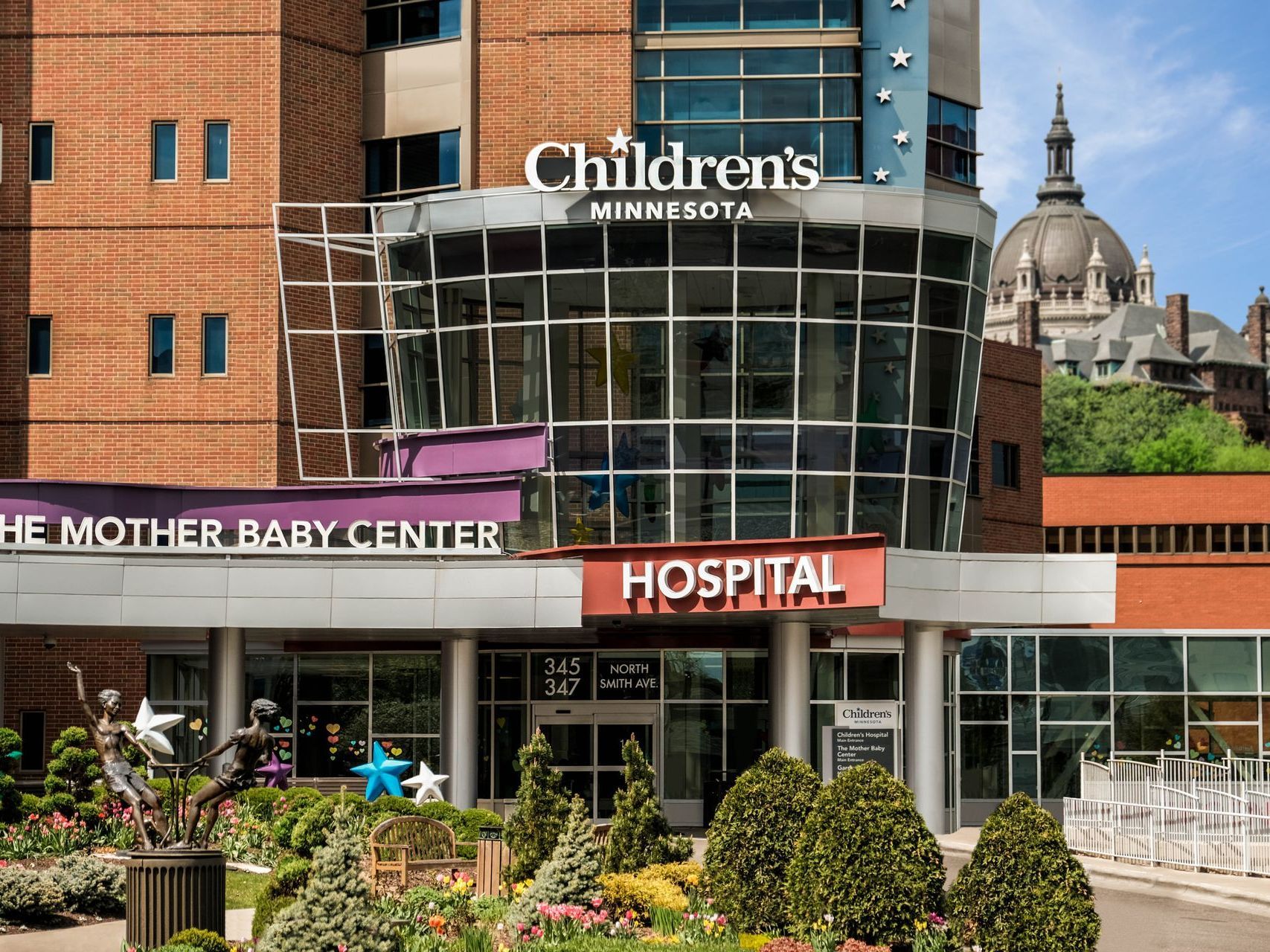
MCRC – Midwest Children’s Resource Center ($75,000)
-
Learn More About This Program
About:
Abused children need a voice and a safe environment to find healing. Midwest Children’s Resource Center (MCRC) works to help more than 1,250 abused children by addressing their physical and emotional needs and the needs of their families. The Center serves a critical role as a hospital-based Child Advocacy Center and a medical clinic by surrounding abused children with comprehensive, compassionate, high-quality care.
Impact Story:
A story of healing intergenerational trauma at Midwest Children’s Resource Center is exemplified
through a family I worked with this year. The victim/survivor disclosed previous sexual abuse by her stepfather. She and her mother came to MCRC for a forensic interview, medical evaluation, and for advocacy services.
While the child met with a nurse practitioner to tell her story, I met with the mother. Soon into
talking with her, she broke down and told me that this had happened to her and she blamed herself
for not protecting her child. We talked through the self-blame and the fact that she had believed her
daughter immediately, a far different story than when she had experienced abuse. I also
asked what support she had had after her abuse. She told me that she had been through about a
month of therapy in college and hadn’t talked about it since.
While the appointment at MCRC was made for the child, it also became an opportunity to help the
mother to heal from her trauma to better support her child going forward. I have found that
caregivers who have unresolved trauma themselves understandably struggle emotionally to help their children through their trauma. It is imperative that we put supportive interventions in right away for children, but also to assist in education and prevention throughout the generations. Through a multidisciplinary approach, we were able to establish the daughter with a specialized psychologist at MCRC and introduce them to each other during their initial appointment. This broke down barriers and made the idea of therapy less intimidating. Going to talk with a familiar person in a familiar environment is much easier for children. By providing the initial backstory to the psychologist, we ensured that she had the tools to best support the child in a trauma-informed
manner.
I also worked with the mother and got her established with her therapist with the goals of working through her trauma and finding ways to better support her child going forward. The mother also joined MCRC’s caregiver support group. This is a support group that was established this year for caregivers of sexually abused children. We work through different topics such as self-care, ways to re-frame language towards children, understanding the legal system, etc. Unfortunately, every one of our caregivers is a survivor themselves so we also work through those dynamics and working through triggers.
This case is a perfect example of how MCRC comprehensively responds to child abuse by providing interventions for the whole family unit to heal from and prevent intergenerational trauma.
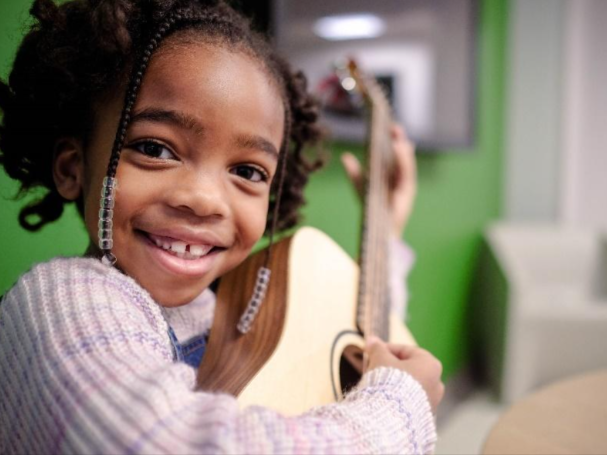
Music Therapy Program ($59,000)
-
Learn More About This Program
About:
Music is a powerful healthcare tool: it can calm a struggling newborn, provide a diversion for a toddler during an uncomfortable procedure, encourage movement for a school-aged child rehabilitating during an extended hospital stay, help a teen to process their feelings and emotions related to a serious illness, and provide coping mechanisms for parents and siblings. Music Therapists work in conjunction with the medical teams at Children’s to meet patient treatment goals through
scientifically based therapies using instruments, movement, and song.
Impact Story:
“H” was a 15-year-old Asian female
diagnosed with a rare solid tumor. This was only one aspect of the challenging circumstances that
this young woman had endured. She had also spent time in a refugee camp, had lost her mother at a young age, and struggled with a variety of trauma and mental-health related symptoms as well.
Music therapy had been involved with this patient for several years, and had provided a variety of
services and interventions including music therapy groups, improvisation, and patient-preferred live music. In 2022, H received the news that her cancer was not curable and made the courageous decision to enter hospice care. Although her family loved her beyond measure, they were not able to provide adequate care for her medical needs at home, or even visit the hospital often, so this patient stayed at Children’s Minnesota for the last several months of her life.
This patient’s complex mental health needs made her challenging to connect with at times. Some
days, she pulled the blankets over her head and refused to come out, answer any questions, or
make choices. Other days, she would initially tell the music therapist to “go away” but further
conversation would reveal that she actually wanted the therapist to stay and be with her. Still other days, she would continually ask the music therapist for “just one more song” and wanted the music therapist to stay with her for hours, playing all her favorite songs while she rested, pretended to sleep, or occasionally, talked about what the lyrics meant to her or sang along. Prior to this long
admission for hospice, a music therapy intern had written a song with her in which she expressed
her resilience, strength, and hope for the future.
The lyrics went, in part, like this:
“And on the hard days, this is what I say
Things will get better, it will be ok.
And on the hard days, this is what I say
Never give up, it will be ok.”
Partway through her hospice admission, the music therapist printed the song on a beautiful
background, framed it, and put it up on her wall. She expressed satisfaction with her song and at
times, wanted the music therapist to sing it with her. Later in the admission, the music therapist
recorded the sound of H’s heartbeat and layered that into her song, further symbolizing her courage and strength.
In the late summer, H passed away, with her family surrounding her. A nurse practitioner who was
there at the time of death later told the music therapist that her family had left all of H’s belongings at the hospital, except for one thing. The framed song lyrics H had written were the only personal belonging that her family took with them. This legacy item which so beautifully captured the resilience of this young woman became something that her family could always treasure and remember her by. This courageous young woman will never be forgotten by anyone who worked with her.
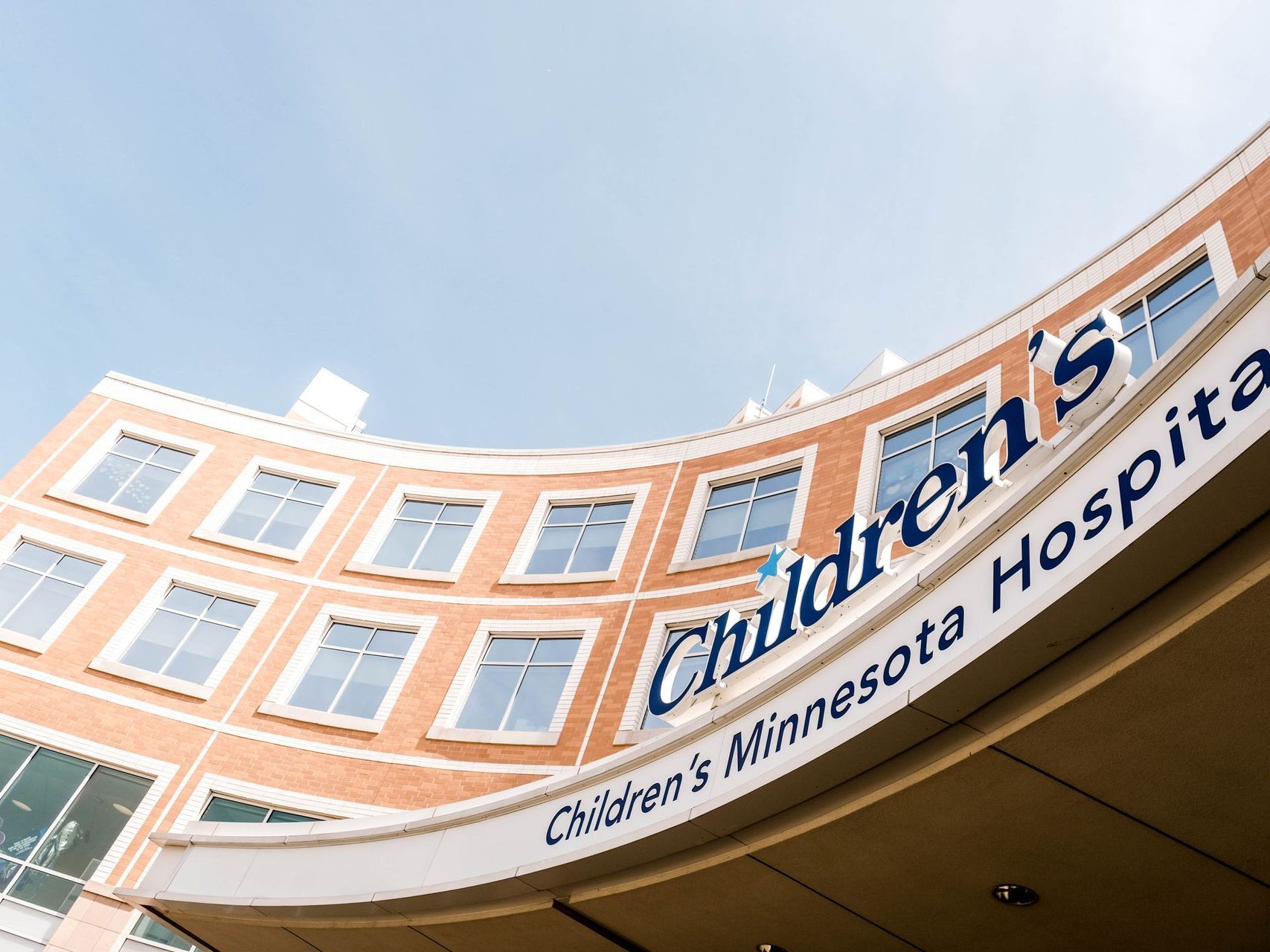
Runaway Intervention Program ($29,000)
-
Learn More About This Program
About:
The Runaway Intervention Program (RIP) is a nurse-led initiative to help sexually assaulted and exploited runaway and homeless children to connect with a nurse practitioner, trauma counseling, and community-based health care. The program utilizes home and community visits by a nurse practitioner in combination with counseling to reduce trauma and improve health and coping behaviors.
Impact Story:
About 11 months ago, Kate was seen at MCRC for care related to a sexual assault. Kate was intoxicated at the time of the assault and in the weeks following the assault, her drinking only escalated as she struggled to process her emotions - her school attendance decreased dramatically and conflict at home increased and she was eventually put on juvenile probation due to public intoxication; she also had some physical sequelae from the assault. She expressed feeling very hopeless and like she had little control over what was going to happen to her – she had little trust in the adults in her life, include some of her medical providers, and struggled to follow through on tasks. Luckily, she choose to come back to MCRC for follow-up care and was connected with the Runaway Intervention Program.
Through the Runaway Intervention Program, Kate met with a nurse practitioner in the community and through a series of visits was able to build trust and talk about her needs and where she was struggling. She has received ongoing reproductive health care, intensive health education on alcohol and alcohol abuse and case management to connect her with school programs as well as connections to services to help her complete her probation requirements. She began to grow in confidence as she worked on navigating systems herself. It also gave her some needed accountability – it’s easy enough to tell someone you are attending school every day, even if you are
not, but it’s harder to tell them that when they are calling you from the front office of your school!
She was also eventually able to disclose that main source of conflict at home was her identification as bisexual and her mother and step-father’s acceptance of male partners (even partner who
assaulted her) but rejection of her current girlfriend. It, unfortunately, was not a surprise when her parents kicked her out just after her 18th birthday. The RIP nurse practitioner help her learn about county benefits available to her and continued to meet with her even when she was forced to move across the Twin Cities for housing – RIP is designed for the staff to go where the youth go.
Today, Kate has about a month left in her year with RIP. She has completed all probation
requirements, she is sober and has housing where she feels safe. She has identified a medical team
for ongoing care when RIP is completed and feels comfortable with how to access appointments and
advocate for her health needs. This spring, she graduated from high school – unfortunately, her
mother choose not to attend her graduation, but Kate was hardly alone: she had her adult sister, a
former stepmother she has reconnected with, her girlfriend and her girlfriend’s parents there to see
her get her diploma. She is spending this year working and saving money and has plans for trade
school next year. While she continues to meet regularly and ask questions about her health and
the programs available, she is far more self-sufficient and able to problem-solve for herself than she was a year ago. All indications are for a bright future.
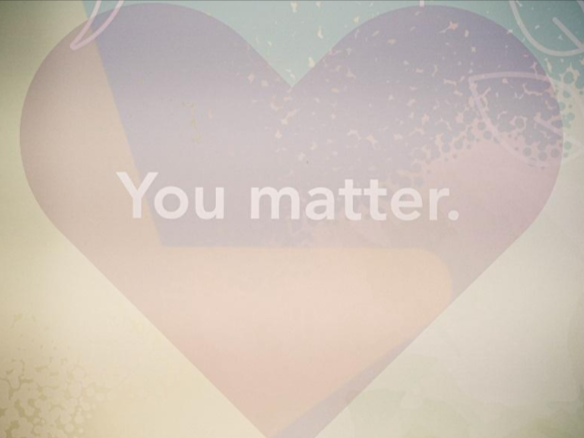
Outpatient Mental Health Services ($50,000)
-
Learn More About This Program
About:
When a child is struggling emotionally, access to quality diagnostics and treatment is critical. Money should never be the barrier to getting the help they need. The Outpatient Mental Health Special Needs Fund enables the Psychological Services Department at Children’s to provide full mental health services for emotionally vulnerable children regardless of income or insurance coverage. Through the Fund, struggling children are given access to the evaluation and treatment services they need to thrive.
Impact Story:
"William" is a long-term therapy client working with a Children's therapist. William, a high school junior, was beginning to show some signs of major mental illness, including symptoms of paranoia and suspiciousness which contributed to a lack of therapeutic progress and heightened concerns as the family prepared for him to leave home to begin college. At a loss for how to help William as his functioning at home and school deteriorated, his therapist referred him to our clinic for therapeutic assessment. The collaborative, respectful approach which characterizes this clinical approach helped Jake to once again trust the clinical process and generate questions that were central to better understanding the ways in which a new, and more serious, course of psychopathology was unfolding. The resulting clarification of his specific symptom pattern allowed his Children’s therapist to effectively work with William and his parents to find appropriate mental health resources for him when he went off to college. The additional time spent on these efforts to utilize the clinical work done here at Children’s to safeguard and optimize his transition to college was exactly the type of important clinical activity that the CHA grant made possible.”
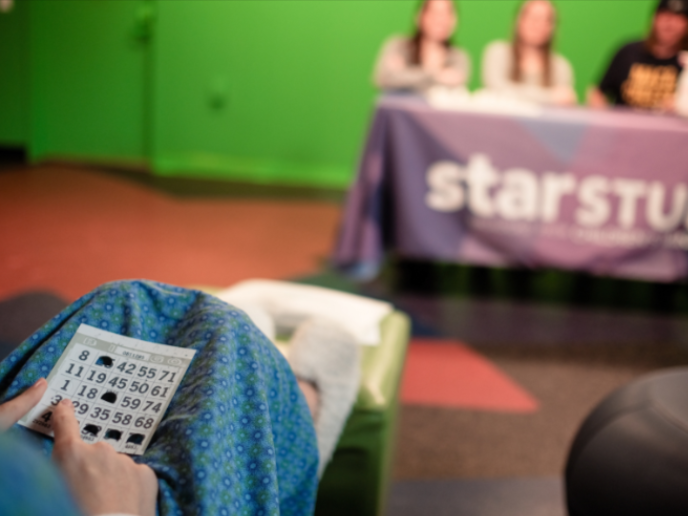
Star Studio’s Interaction Initiative ($52,000)
-
Learn More About This Program
About:
Anxiety, isolation, and fear are frequent emotions for hospitalized children and families. Star Studio aims to counteract those emotions with programs that make them laugh, play and connect. Star Studio is Children’s own in-house, live television studio with programs developed specifically to engage with and lift the spirits of hospitalized children in and away from their hospital rooms. This year, Star Studio will be upgrading filming equipment to broadcast remotely and invest in improving the quality of show content, such as videos, print graphics, and web graphics.
Impact Story:
Alexis is 13 years old and has been paralyzed since birth. She and her family often make the 5 hour trip for surgeries, treatments and appointments at Children’s Minnesota. Sometimes the visits do not go the way they want. Through the ups and downs, one thing that the family always counts on is the entertainment provided by Star Studio. Alexis and her family are big fans of the shows and have formed a relationship with The Dude that is special. Recently, Alexis came by Star Studio and asked to see The Dude. As he walked into the main lobby of the hospital in Minneapolis, he knew
something big was about to happen. Alexis stood up from her wheelchair and started walking
towards The Dude. Her mother said, “She wanted you to be the first one to see her walking!”
For many patients and families, Star Studio is intrinsically connected to their Children’s MN journey. The positivity and fun associated with non-clinical, wrap-around services like Star Studio is what makes Children’s MN uniquely one of the best pediatric hospitals in the world
